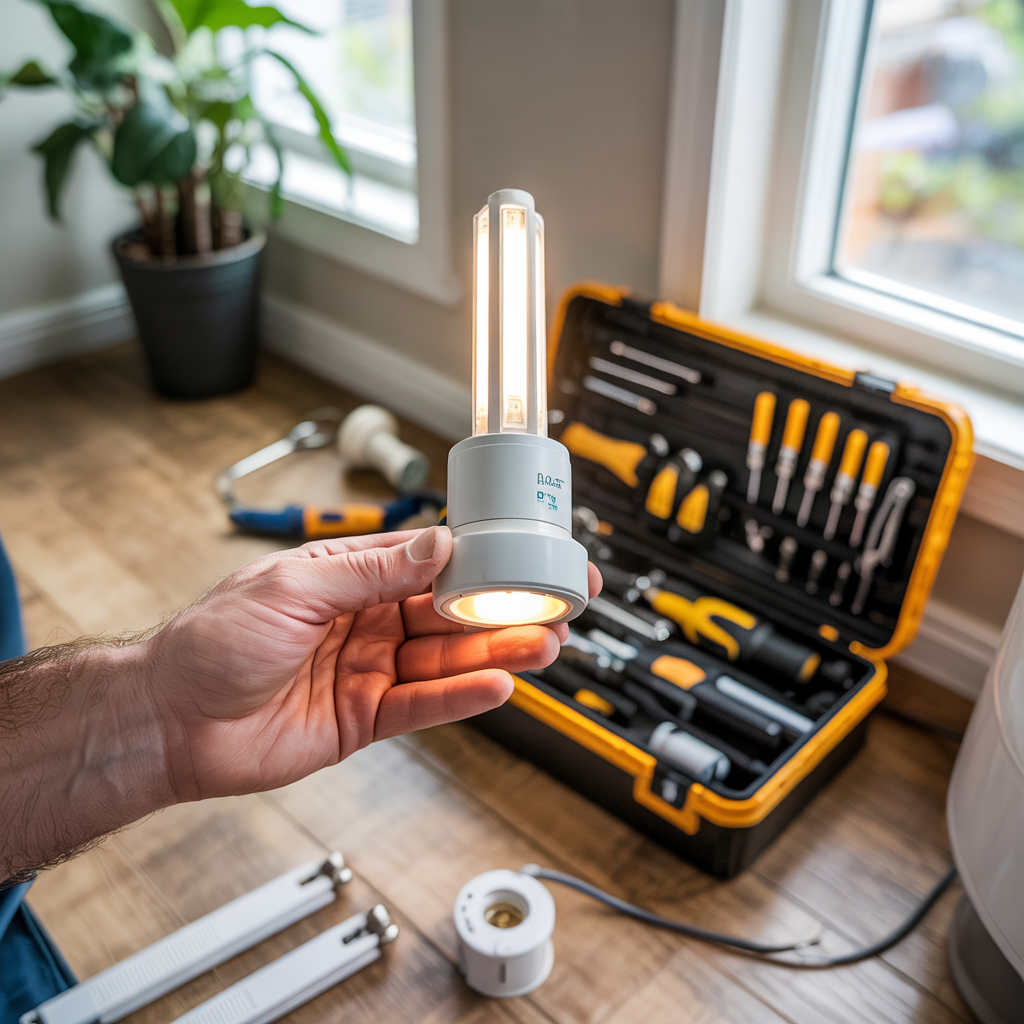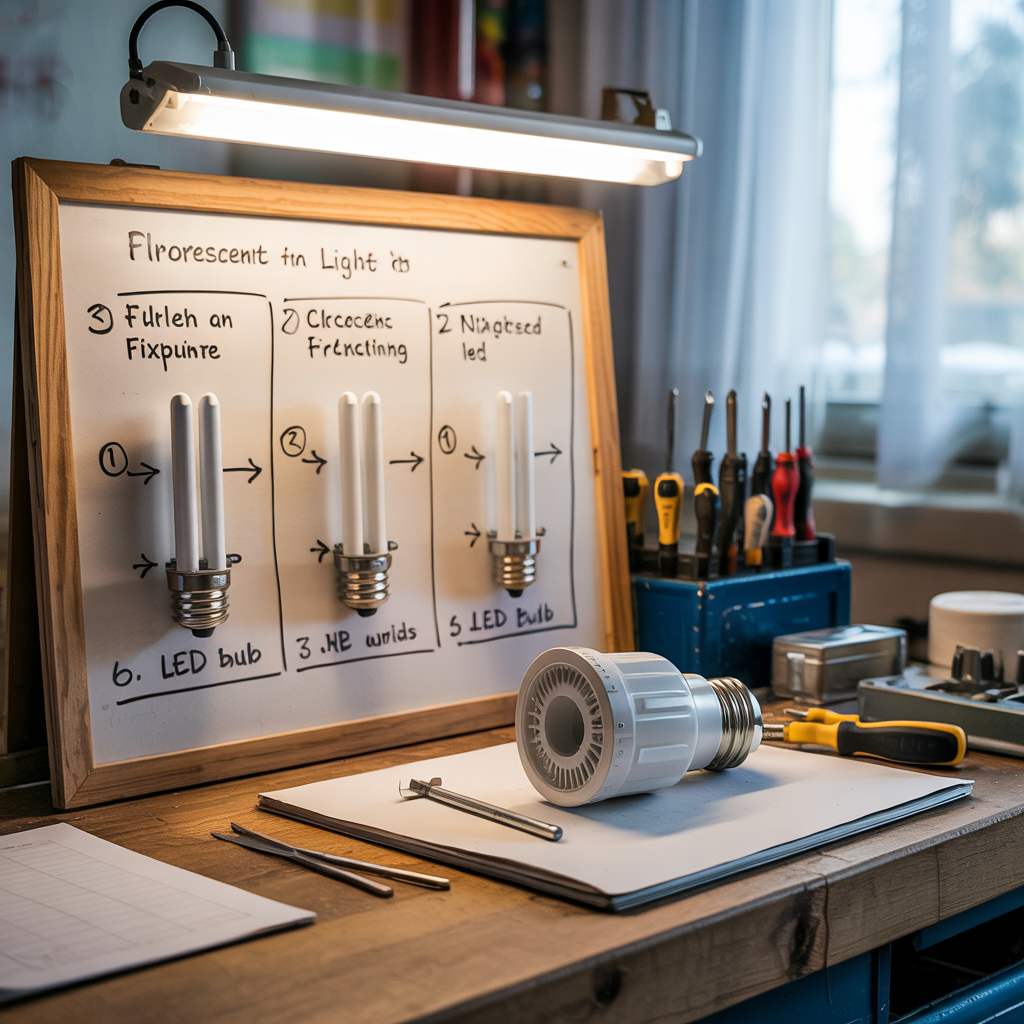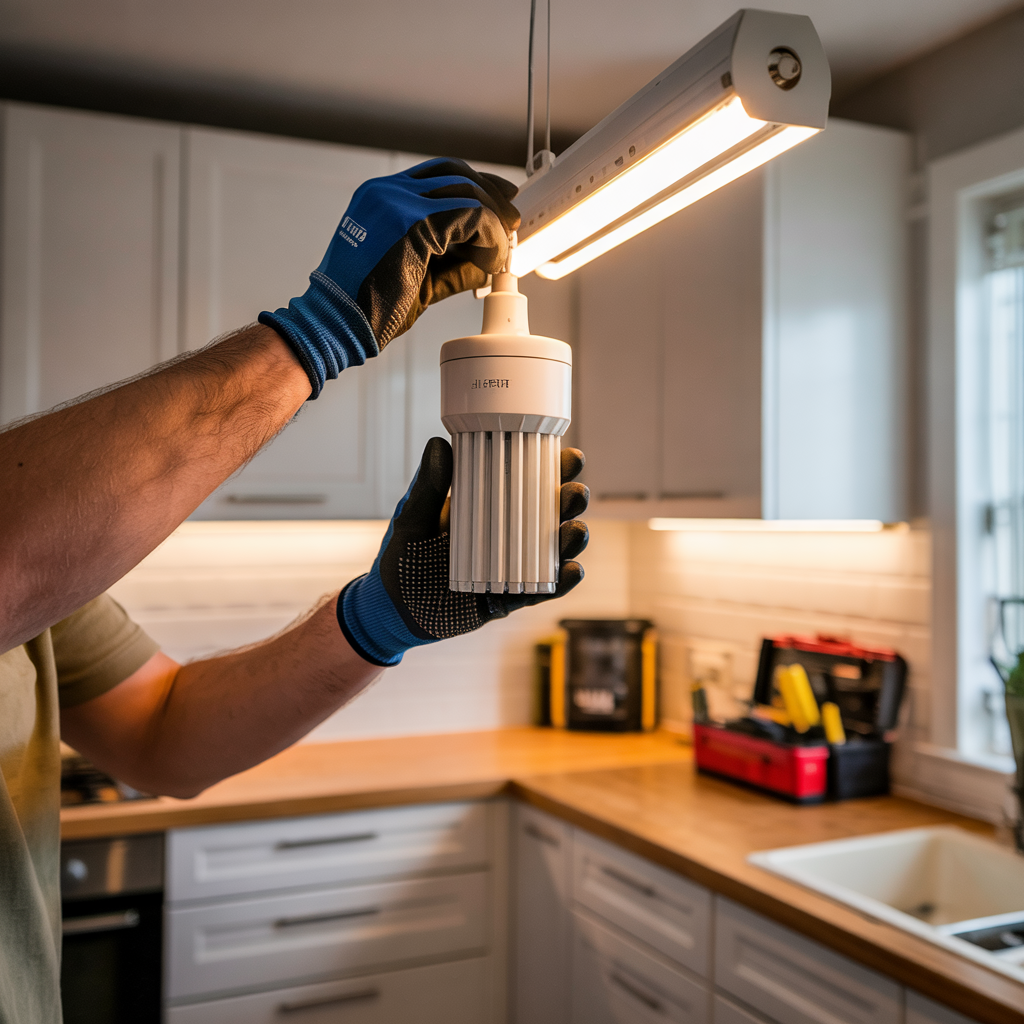How to Replace Fluorescent Light with LED? A Step By Step Guide
Switching from fluorescent lights to LEDs offers numerous advantages, from energy efficiency to improved light quality. This guide provides a comprehensive walkthrough of the process, addressing various aspects from initial assessment to the final installation, ensuring a smooth transition for both DIY enthusiasts and experienced electricians. We’ll cover everything from understanding different LED types to…
Switching from fluorescent lights to LEDs offers numerous advantages, from energy efficiency to improved light quality. This guide provides a comprehensive walkthrough of the process, addressing various aspects from initial assessment to the final installation, ensuring a smooth transition for both DIY enthusiasts and experienced electricians. We’ll cover everything from understanding different LED types to troubleshooting potential issues, empowering you to make an informed decision and successfully replaced.
How to replace fluorescent light with LED? Turn off power. Remove the fluorescent tube and ballast cover. Disconnect or bypass the ballast (for direct-wire LEDs). Connect LED tube wires directly to power (per manufacturer’s wiring diagram). Install LED tubes. Secure the fixture, restore power, and test the lights. Always follow safety guidelines and product instructions.
Fluorescent lights come in various forms, including T8, T12, and compact fluorescent lamps (CFLs). T8 and T12 refer to the tube diameter (in eighths of an inch), while CFLs are spiral-shaped tubes. Understanding the type you’re replacing is crucial for selecting the correct LED replacement.
Fluorescent lights use electricity to excite mercury vapor within a glass tube, producing ultraviolet (UV) light. This UV
light then strikes a phosphor coating on the inside of the tube, converting it into visible light. This process is less efficient than LEDs, resulting in higher energy consumption and shorter lifespan.
How to replace fluorescent light with LED?
To replace a fluorescent light with an LED, turn off the power, remove the old tube, and check if your LED requires a ballast. For ballast-bypass LEDs, disconnect or remove the ballast, rewire the fixture as directed, and install the LED tube. Restore power and test the light.
Introducing LED Lighting

What are LEDs?
LEDs, or light-emitting diodes, are semiconductor devices that emit light when an electric current passes through them. Unlike fluorescent lights, LEDs don’t require mercury or a phosphor coating, resulting in a more environmentally friendly and energy-efficient option.
Read More: How to Install LED Recessed Lighting In Existing Ceiling? A Comprehensive Guide
Types of LED Lights
LEDs are available in various forms, mirroring fluorescent light options: tubes, panels, and bulbs. You can find direct replacements for T8 and T12 fluorescent tubes, as well as LED panels that can be installed in recessed lighting fixtures. The choice depends on your existing setup.
Why Switch to LED?
Energy Efficiency
LEDs consume significantly less energy than fluorescent lights, reducing your electricity bill and carbon footprint. A typical LED tube uses about 50% less energy than a comparable fluorescent tube, resulting in substantial long-term savings.
Longevity
LEDs have a much longer lifespan than fluorescent lights, lasting up to 50,000 hours compared to the 10,000-20,000 hours of typical fluorescent tubes. This translates to fewer replacements and less maintenance.
Environmental Benefits
LEDs are mercury-free, making them a safer and more environmentally friendly alternative to fluorescent lights. Their longer lifespan also reduces the amount of waste generated from discarded bulbs.
Read More: 15 Front Porch Ceiling Lighting Ideas: Brighten Up Your Welcome
Choosing the Right LED Replacement

Matching Wattage and Lumens
When replacing fluorescent lights with LEDs, it’s important to match the lumens (brightness) rather than the wattage. Fluorescent lights are typically rated in watts, while LEDs are rated in lumens. Consult a conversion chart or the packaging to find the correct equivalent.
Color Temperature
LEDs are available in various color temperatures, measured in Kelvin (K). Lower Kelvin values (e.g., 2700K) produce warmer, yellowish light, while higher Kelvin values (e.g., 5000K) produce cooler, bluish light. Choose a color temperature that suits your needs and preference.
Choosing the Right Form Factor
Ensure the LED replacement fits your existing fixture. Measure the length and diameter of your fluorescent tube and check the specifications of the LED replacement before purchasing. Consider the type of ballast in your fixture; some LEDs work with existing ballasts, while others require ballast bypass.
Read More: How to Convert 4ft Fluorescent Light to LED? Easiest Way
Replacing Fluorescent Lights with LEDs: A Step-by-Step Guide

Safety Precautions
Before starting any electrical work, turn off the power to the fixture at the breaker box. Always double-check to ensure the power is off before touching any wires.
Removing the Old Fixture
Carefully remove the old fluorescent light fixture according to its manufacturer’s instructions. Depending on the type of fixture, this might involve unscrewing fasteners, removing covers, and disconnecting wires.
Preparing for LED Installation
If your fixture uses a ballast, you may need to remove or bypass it. Consult the instructions for your LED replacement to determine the necessary steps. Some LED replacements are designed to work with existing ballasts, while others require ballast removal for optimal performance.
Installing the New LED Fixture
Connect the wires from the new LED fixture to the corresponding wires in the ceiling. Usually, this involves connecting the neutral wire (white), the hot wire (black), and the ground wire (green or bare copper). Make sure the connections are secure.
Testing and Final Steps
Turn the power back on at the breaker box and test the new LED light. If it doesn’t work, double-check all connections. Once it’s working properly, reinstall any covers or housings.
Benefits Beyond Energy Savings
Improved Light Quality
LEDs generally produce more consistent and even light distribution than fluorescent lights, reducing flickering and shadows.
Instant On/Off
Unlike fluorescent lights, LEDs turn on instantly without any delay or warm-up time, providing immediate illumination.
Dimmability
Many LED replacements offer dimming capabilities, allowing you to adjust the brightness to suit your needs and mood. Check the specifications to see if your chosen LED is dimmable.
Limitations and Considerations
Initial Cost
While LEDs offer long-term savings, the initial cost might be higher than replacing fluorescent lights with similar fluorescent lights. However, the energy savings and longer lifespan often offset this initial investment.
Heat Dissipation
LEDs generate some heat, and proper ventilation is important to prevent overheating. Choose LED replacements with adequate heat sinks and ensure proper airflow around the fixture.
Disposal of Old Lights
Dispose of your old fluorescent lights properly at a designated recycling center, as they contain mercury. Never throw them in the regular trash.
Comparing Fluorescent and LED Lights
Table: Fluorescent vs. LED
| Feature | Fluorescent | LED |
|---|---|---|
| Energy Efficiency | Lower | Higher |
| Lifespan | Shorter | Longer |
| Mercury Content | Contains Mercury | Mercury-Free |
| Cost | Lower initial cost | Higher initial cost |
| Light Quality | Can flicker, uneven distribution | Consistent, even distribution |
Troubleshooting Common Issues
Light Doesn’t Turn On
-
- Check the breaker box to ensure the power is on.
- Verify all wire connections.
- Check the LED bulb itself for any damage.
Flickering Light
-
- Make sure the LED is compatible with the existing ballast (or that the ballast has been properly bypassed).
- Check for loose connections.
- Consider replacing the LED if flickering persists.
Uneven Light Distribution
-
- Ensure the fixture is properly installed.
- Verify that the LED replacement is the correct size and type for the fixture.
Frequently Asked Questions
What types of LED replacements are available?
LED replacements are available in various forms, including tubes (direct replacements for T8 and T12 fluorescent tubes), panels, and bulbs. The best option depends on your existing fixture and lighting needs.
How do I determine the correct lumens for my replacement?
You’ll need to check the lumens of your existing fluorescent light and find an LED replacement with a similar lumen output. Wattage is not a direct comparison between fluorescent and LED lighting; lumen output is the key indicator of brightness.
Do I need to replace the ballast?
This depends on the LED replacement you choose. Some are designed to work with existing ballasts, while others require ballast removal or bypass. Check the manufacturer’s instructions for your specific LED replacement.
What if my LED light doesn’t work after installation?
First, check the breaker to make sure the power is on. Then, carefully double-check all wire connections to ensure they’re secure and correctly matched. If the problem persists, the LED unit itself may be faulty, and you might need a replacement.
How do I dispose of old fluorescent lights?
Fluorescent lights contain mercury, so it’s crucial to dispose of them properly. Contact your local waste management authority or a hazardous waste recycling center for information on proper disposal methods in your area.
Are all LEDs dimmable?
No, not all LEDs are dimmable. Check the specifications of the LED replacement you are considering to verify its dimmability. If you intend to dim the lights, ensure that both the LED bulb and the dimmer switch are compatible.
Final Thoughts
Replacing fluorescent lights with LEDs is a simple yet impactful upgrade for your home or business. The benefits of improved energy efficiency, longevity, and environmental friendliness outweigh the initial cost. This guide provides a comprehensive overview of the process, covering everything from selecting the right replacement to troubleshooting potential issues. By following these steps and taking the necessary precautions, you can successfully upgrade your lighting and enjoy the numerous advantages of LED technology. Remember to always prioritize safety by turning off the power before undertaking any electrical work. With a little planning and attention to detail, you can illuminate your space with energy-efficient and long-lasting LED lighting. Make the switch today and experience the difference!

